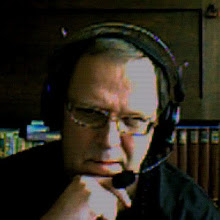VARRO VOOGLAID: Suur Prantsuse Revolutsioon ja kunstiteos?
Eilses EPL-s avaldas Kaarel Tarand lootust, et reformatsioonist ja valgustusest „hullutatud” inimesed moodustavad me kodanikkonna enamuse ning kinnitas oma kuuluvust selliste inimeste hulka, nimetades Suurt Prantsuse Revolutsiooni valgustusaja “suurimaks kunstiteoseks”. Ühest küljest võiks seda ju võtta omamoodi aprillinaljana, ent vaevalt oli see naljana mõeldud.
Kuivõrd Suure Prantsuse Revolutsiooni näol on tegu ühega Euroopa ajaloo kõige võikamatest veresaunadest – demoonilise orgiaga, mida võib teatud episoodides nimetada julgelt genotsiidiks –, siis selle kirjeldamine kunstiteosena näitab, et nii mõnegi jaoks ei ole oma identiteedi juurutamine vabaduse, võrdsuse ja vendluse ideoloogias vähem kriitikavaba kui teiste enesemääratlemine rahvus-romantiliste müütide kaudu. Valedel põhinevad pahatihti mõlemad.

Suurest Prantsuse Revolutsioonist (standardses ajalooõpikus esitatust) adekvaatsema pildi saamiseks tasub lugeda Simon Schama raamatut Citizens. Sealt leiab palju huvitavat ja ka lihtsalt šokeerivat, mh Tarandi poolt igatsetud kodaniku kontseptsiooni konstrueerimise kohta.
Aga kel selle raamatuga tutvumise võimalust ei ole, see võiks heita pilgu kasvõi sellele artiklile The Telegraph‘is: “Vendée French call for revolution massacre to be termed ‘genocide’”. Muu hulgas võib kõnealuse “kunstiteose” kirjeldusest leida, et ka Prantsusmaal on selle osas rahvuslik-riikliku enesemääramise huvides pikka aega tõde salatud ja valetatud (mh kooliõpikutes), teostamaks rahvale midagi sellist, millest meil kiputakse nüüd rääkima kui “psühholoogilisest kaitsest” või “rahvuslik-riiklikust informatsioonilisest enesemääramisest”:
Allikas: http://vooglaid.wordpress.com/
Kuivõrd Suure Prantsuse Revolutsiooni näol on tegu ühega Euroopa ajaloo kõige võikamatest veresaunadest – demoonilise orgiaga, mida võib teatud episoodides nimetada julgelt genotsiidiks –, siis selle kirjeldamine kunstiteosena näitab, et nii mõnegi jaoks ei ole oma identiteedi juurutamine vabaduse, võrdsuse ja vendluse ideoloogias vähem kriitikavaba kui teiste enesemääratlemine rahvus-romantiliste müütide kaudu. Valedel põhinevad pahatihti mõlemad.

Suurest Prantsuse Revolutsioonist (standardses ajalooõpikus esitatust) adekvaatsema pildi saamiseks tasub lugeda Simon Schama raamatut Citizens. Sealt leiab palju huvitavat ja ka lihtsalt šokeerivat, mh Tarandi poolt igatsetud kodaniku kontseptsiooni konstrueerimise kohta.
Aga kel selle raamatuga tutvumise võimalust ei ole, see võiks heita pilgu kasvõi sellele artiklile The Telegraph‘is: “Vendée French call for revolution massacre to be termed ‘genocide’”. Muu hulgas võib kõnealuse “kunstiteose” kirjeldusest leida, et ka Prantsusmaal on selle osas rahvuslik-riikliku enesemääramise huvides pikka aega tõde salatud ja valetatud (mh kooliõpikutes), teostamaks rahvale midagi sellist, millest meil kiputakse nüüd rääkima kui “psühholoogilisest kaitsest” või “rahvuslik-riiklikust informatsioonilisest enesemääramisest”:
“In the city of Nantes, the Revolutionary commander Jean-Baptiste Carrier disposed of Vendéean prisoners-of-war in a horrifically efficient form of mass execution. In the so-called “noyades” – mass drownings – naked men, women, and children were tied together in specially constructed boats, towed out to the middle of the river Loire and then sunk.
Now Vendée, a coastal department in western France, is calling for the incident to be remembered as the first genocide in modern history. Residents claim the massacre has been downplayed so as not to sully the story of the French Revolution.
Historians believe that around 170,000 Vendéeans were killed in the peasant war and the subsequent massacres – and around 5,000 in the noyades. When it was over, French General Francois Joseph Westermann penned a letter to the Committee of Public Safety stating: “There is no more Vendée… According to the orders that you gave me, I crushed the children under the feet of the horses, massacred the women who, at least for these, will not give birth to any more brigands. I do not have a prisoner to reproach me. I have exterminated all.”
Two centuries on, growing calls from local politicians to have it declared a “genocide” have sparked intellectual debate. ”There was in the Revolution a clearly stated programme to wipe out the Vendéean race,” said Philippe de Villiers, European deputy and former presidential candidate for the right-wing traditionalist Movement for France (MPF) party.Kui see on tõesti suurim kunstiteos, mille nn valgustusajastu on meile pärandanud, siis tasub küsida, kas me ei ole sellest ajaloolisest epohhist pärinevat ideelist raamistikku enesemääratlusse inkorporeerides talitanud liialt kergekäeliselt? Kokkuõvõttes ei saa ma kuidagi nõustuda Kaarel Tarandi lootusega, “et inimesed, kes on reformatsioonist ja valgustusest „hullutatud”, moodustavad me kodanikkonna enamuse.” Pigem tahaks loota, et oma identiteedi juurutamisel säilitatakse alati kriitiline meel.
“Why did it take place? Because a people was chosen to be liquidated on account of their religious faith. Today we demand a law officially declaring it as a genocide; we demand a statement from the president; and recognition by the United Nations.”
Mr de Villiers – who opposes Turkish entry into the EU – was in Armenia last month, where he compared the Vendée of 1794 to the 1915 massacres of Armenians. In neither case, he said, “have the perpetrators admitted their fault or asked forgiveness of the victims”.
The bloody events of the Vendée were long absent from French history books, because of the evil light they shed on the Revolutionaries. However, they were well known in the Soviet bloc. Lenin himself had studied the war there and drew inspiration for his policies towards the peasantry.
Allikas: http://vooglaid.wordpress.com/




0 kommentaari:
Postita kommentaar